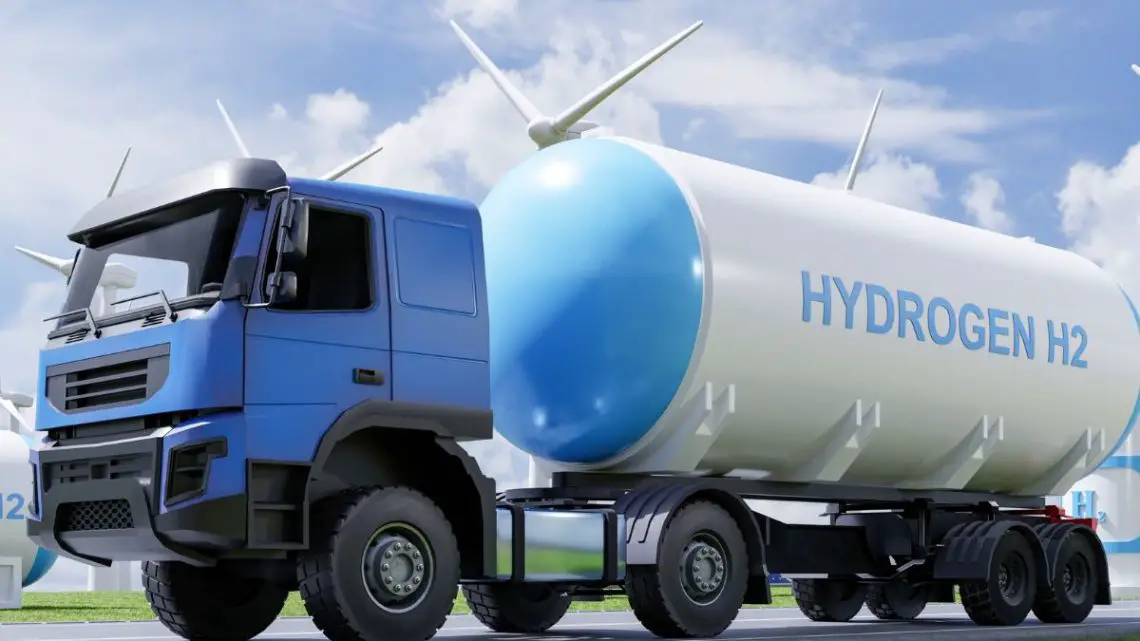
All Eyes Are On Hydrogen Delivery Strategies with Big Demand
July 15, 2023To make H2 work for decarbonization, a viable infrastructure will need to be installed.
Hydrogen delivery will be a key component to making sure that H2 can be used reliably and practically by industries, for transportation, and even home heating, among other applications.
That said, unless H2 is produced on site, it will require proper infrastructure to bring it to where it is used.
For a solid infrastructure to work, it must achieve effective, reliable hydrogen delivery from where it is made to its end use point, such as a power generator, an industrial facility, or fueling station. As such, an infrastructure could be comprised of anything from liquefaction plants to trucks, pipelines, compressors, storage facilities, and dispensers.
The technology required for an H2 infrastructure is already commercially available. A number of companies have already been delivering bulk H2 in the United States for years. That said, as demand for H2 continues to rise, it will require substantial regional expansions of this infrastructure, as well as the development of fresh technologies, such as chemical carriers for H2 transportation at a high density, and tech for high throughput fueling for heavy-duty fuel cell transportation.
Ammonia delivery technology involves the transportation and storage of ammonia from its production site to its point of use.
This process often requires specialized equipment due to the hazardous nature of ammonia. Typically, ammonia is stored in anhydrous or aqueous tanks and is transported via pipelines, trucks, or railcars. For instance, in anhydrous form, it can be transported in pressurized tank cars or tanker trucks. On the other hand, aqueous ammonia systems often use vaporizers for delivery. The choice of delivery system depends on factors such as distance, volume, and safety considerations. With advances in technology, there is increasing interest in using ammonia as a hydrogen carrier, which presents new opportunities and challenges for ammonia delivery systems.
Hydrogen delivery requires that the gas be pressurized and delivered compressed, or that it be liquefied.
The location of the production of the H2 can have a large impact on its cost and can decide the best method to deliver it to its destination. For instance, if an H2 production facility is large and centrally located, it would be able to use scale to keep production costs down. However, this could also result in higher delivery costs because it would mean that the usage point is farther away.
Comparatively, distributed production facilities that produce H2 onsite for end users might keep their hydrogen delivery costs down, but it could cost more to produce the H2 itself simply because it is working in smaller volumes.
Using pipelines and liquid tanker trucks
Today, the most commonly used methods of hydrogen delivery in the United States are pipelines and on the roads in cryogenic liquid tanker trucks or gaseous tube trailers, according to the US Department of Energy.
Massive Green Hydrogen Pipeline In The Works…
Pipelines are used the most in areas where the demand is highest, so that hundreds of tons of H2 can be transported every day, and where this demand is expected to remain stable for decades. On the other hand, trucks are used in areas where demand is on a smaller scale or in areas where demand is emerging and has yet to establish itself reliably.
FAQ Guide: Delivering Hydrogen to End-Use Points
Q. Why is the development of hydrogen delivery infrastructure significant?
A. Hydrogen is a clean, versatile, and efficient energy source that has the potential to play a vital role in reducing greenhouse gas emissions and mitigating climate change. However, to unlock its full potential, we need a robust and reliable infrastructure for delivering hydrogen from its source of production to its end-use point. This infrastructure is crucial for the widespread adoption of hydrogen as an energy source and the transition to a low-carbon economy.
Q. What are the different methods of hydrogen delivery?
A. There are three primary methods of delivering hydrogen: cryogenic liquid tanker trucks, gaseous tube trailers, and pipelines.
Cryogenic liquid tanker trucks
Cryogenic liquid tanker trucks are used to transport hydrogen in its liquid form at extremely low temperatures (-253°C). They are typically used for short-distance transportation, such as delivering hydrogen from a production facility to a nearby refueling station or industrial site.
Strengths:
- Flexibility in transport routes
- High storage density allowing for a large amount of hydrogen to be transported
- Suitable for small-scale applications
Weaknesses:
- High capital and operating costs
- Limited range as liquid hydrogen slowly evaporates during transportation
- Safety concerns due to the potential for leaks or spills
Gaseous tube trailers
Gaseous tube trailers are used to transport hydrogen in high-pressure tanks as compressed gas. They are typically used for medium and long-distance transportation, such as delivering hydrogen between states or countries.
Strengths:
- Lower capital and operating costs compared to liquid tanker trucks
- Can travel longer distances than liquid tanker trucks
- Suitable for medium-scale applications
Weaknesses:
- Lower storage density compared to liquid tanker trucks
- Limited flexibility in transport routes
- Safety concerns due to the high pressure of the stored hydrogen
Pipelines
Pipelines are a well-established method for delivering natural gas, and they can also be used for delivering hydrogen. Pipelines can transport large amounts of hydrogen over long distances, making them ideal for large-scale applications.
Strengths:
- High storage density allowing for a large amount of hydrogen to be transported
- Low operating costs compared to tanker trucks
- Suitable for large-scale applications
Weaknesses:
- High capital costs
- Limited flexibility in transport routes
- Safety concerns due to the potential for pipeline leaks or damage
Q. What role does location play in determining the most effective method of delivery?
A. The most effective method of delivery depends on several factors, including the distance between the production facility and the end-use point, the amount of hydrogen that needs to be transported, and the availability of existing infrastructure. For short distances, cryogenic liquid tanker trucks may be the most effective method of delivery, while pipelines may be more suitable for longer distances and larger volumes of hydrogen. Gaseous tube trailers are often used for medium-distance transportation.
Q. What legal and regulatory considerations must be taken into account when delivering hydrogen?
A. Delivering hydrogen requires complying with various legal and regulatory requirements to ensure safety and environmental protection. These regulations cover aspects such as pipeline design, construction, and operation, as well as the transportation of hazardous materials. Any accidental release of hydrogen during transportation can pose safety risks to personnel and the environment. Therefore, adequate safety measures must be put in place, such as leak detection and emergency response plans.
Given the potential for hydrogen to play a crucial role in decarbonizing our energy system, developing a robust delivery infrastructure is essential. By understanding the different methods of delivery available, their respective strengths and weaknesses, and the regulatory considerations involved, we can make informed decisions and drive progress towards a sustainable future.
There are several methods for delivering ammonia, each with its own advantages and considerations:
- Pipelines: Similar to natural gas, ammonia can be transported through underground pipelines over long distances. This is a cost-effective method for large-scale transportation but requires significant capital investment for infrastructure development.
- Railcars: Ammonia can be transported in pressurized tank cars designed specifically for hazardous materials. This method is flexible and can cover long distances, but the speed of delivery is dependent on rail logistics.
- Tanker Trucks: For shorter distances, tanker trucks are often used to transport ammonia. These vehicles are equipped with specially designed tanks that can safely contain the pressurized ammonia.
- Ships: For international or intercontinental transportation, ammonia is often shipped in specially designed vessels. This method allows for large volumes of ammonia to be moved but is subject to maritime regulations and logistics.
- Tubes and Cylinders: For small volumes or specific applications, ammonia can be delivered in tubes or cylinders.
Each method of delivery has its own safety and regulatory considerations due to the corrosive and hazardous nature of ammonia. Therefore, proper safety measures, including specialized containment and handling procedures, are crucial in all methods of ammonia delivery.
Sources:




 With over 15 years of reporting hydrogen news, we are your premier source for the latest updates and insights in hydrogen and renewable energy.
With over 15 years of reporting hydrogen news, we are your premier source for the latest updates and insights in hydrogen and renewable energy.